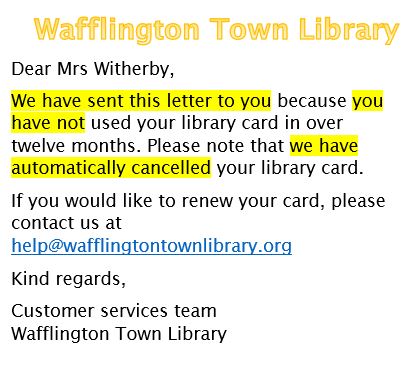
The passive voice is finally having its moment. It may not be as dynamic or direct as the active voice, but as we’re about to find out, it does have its special uses.
Let’s take a look at this letter:
 It’s clear, concise and to the point, but perhaps it’s a little on the harsh side. It sounds almost as though poor Mrs Witherby has done something wrong.
It’s clear, concise and to the point, but perhaps it’s a little on the harsh side. It sounds almost as though poor Mrs Witherby has done something wrong.
The writer has used the active voice throughout the letter. In most scenarios, the active would be the best choice, but there’s a rather accusing tone to it here.

This is one of those rare occasions when it’s better to be indirect. The passive voice is great for taking the edge off an accusation and that’s exactly what we need here.

By using the passive voice, we’ve softened the tone and let Mrs Witherby off the hook. It’s a much less confrontational letter as a result.
The active voice or the passive voice. Which one do you naturally gravitate towards? Let us know in the comments below: